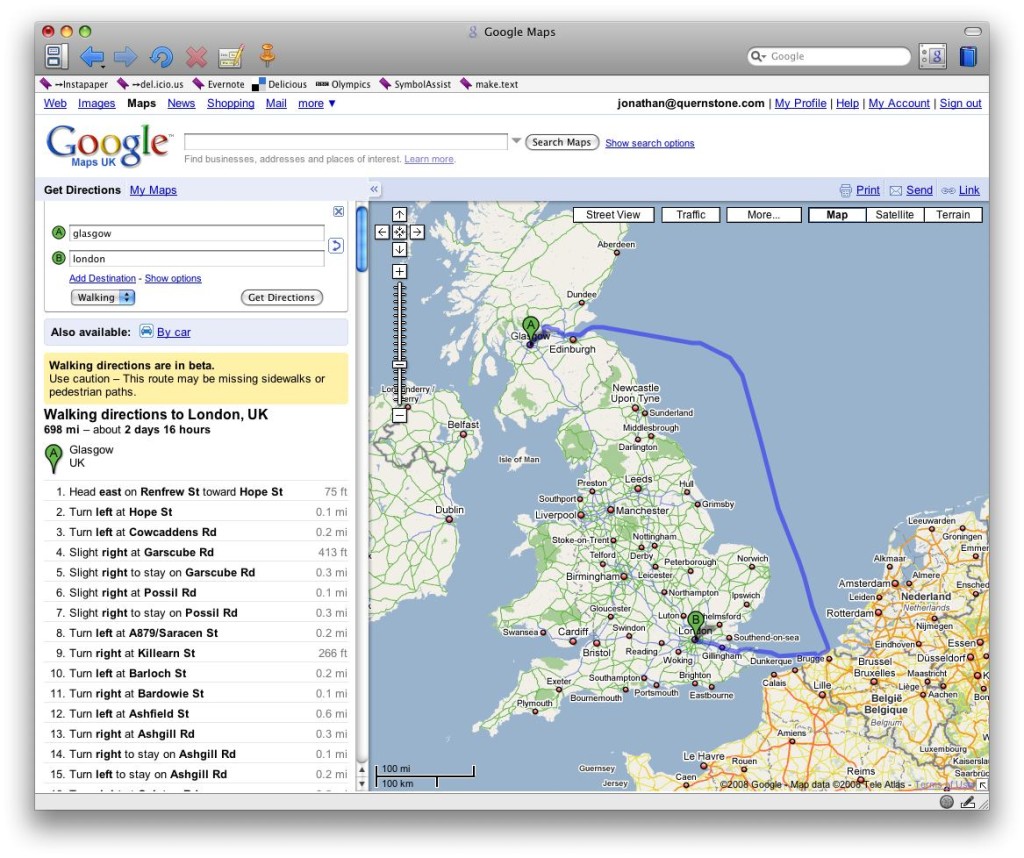FindYourTribe is an online survey that claims to work out what social grouping you’re part of. It’s a bit of a giggle. It’s from Channel 4, despite lack of appearance on the front page (roll over the thinly-grey ‘About this game’ to learn that crucial snippet).
I rather enjoyed taking the survey. It’s wittily done, doesn’t take itself too seriously, and some of the questions are unexpected and quite clever.
I also think the whole thing is massive nonsense, and not in a ‘just a bit of fun’ reasonable sort of way.
My impression is doubtless skewed by two main problems: firstly, I’m entirely the wrong age for this thing (though there is a category for ’35+’. Gee, thanks). Secondly, the three options it gave me at the end for ‘my tribe’ were all defined principally by music choice and hair style. Er… what?!
Of course, now I can’t go back and check what all the other tribes were, but I’ve a bigger problem with this: while I accept that youth culture is, to an extent, tribal, isn’t ‘tribe’ just a politically-correct synonym for ‘stereotype’?
Profiling audiences as a route to understanding them is, of course, entirely reasonable. But there’s something insidiously self-selecting about the presentation here, as if I’m supposed to funnel myself down into one of the predetermined stereotypes, or rail against the system for – OMG! OMG! Worst day of my life! – putting me in the wrong one.
Hmm.
Actually, I think what frustrates me most is that we’re seemingly stuck with blunt instrument tools like this, as we explore the intersection of centralised media and dispersed, interpersonal audiences. This feels like a tool from a previous generation. Wrapped in neat design and carefully-appropriate language choices, to be sure, but structurally the sort of thing the BBC might have done with a clipboard in 1986.
The problem with ‘the audience’ is that, to its members, it’s not ‘the audience.’ It’s ‘me, and my mates, and a bunch of people I don’t know but with whom I apparently have something vaguely in common, apart from that guy over there who’s obviously a tosser.’
And that’s only for physical groupings: for broadcast or web media, ‘the audience’ is usually, as far as I’m concerned, me. Just me.
While much of this new social media revolution might be about connecting me with people slightly like me in new and interesting ways, it’s still experienced by individuals. Lots of them. All alone. Simultaneously, but not together. To your servers they might look like ‘the audience,’ but in their heads they’re not.
Tools like FindYourTribe might be useful after all, if they help spot patterns of behaviour, broad groupings, and give a sense of the individual variation within groups. They can work as ‘pull’ models, where the media producer uses the stereotype labels as affordances to help understand audiences, and grapples with how their media might affect people within those categories.
Too often, however, the stereotypes become the targets for ‘push’ models, where one assumes the stereotype works and mercilessly tunes one’s media and its delivery to suit. That worked for broadcast TV, where the stereotypes were very broad-brush and the audience scale was immense; we have neither of those factors on our side with the sorts of things FindYourTribe is meant to inform.

